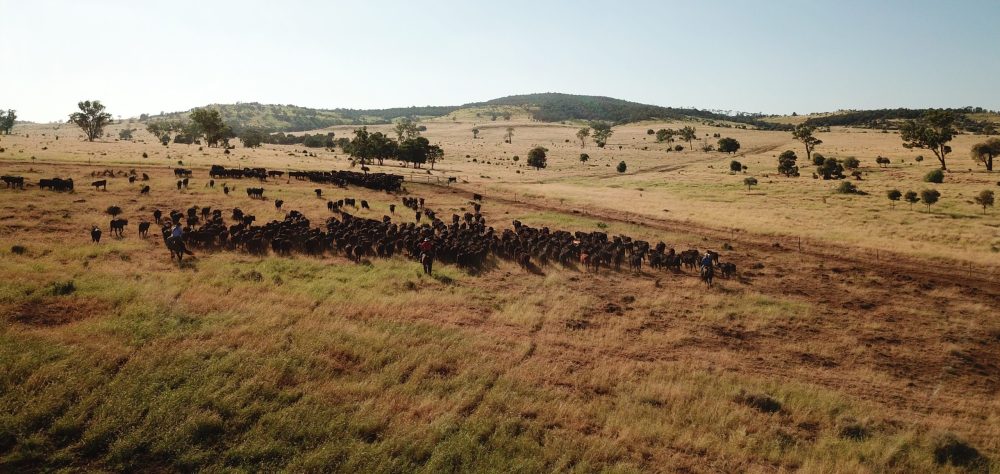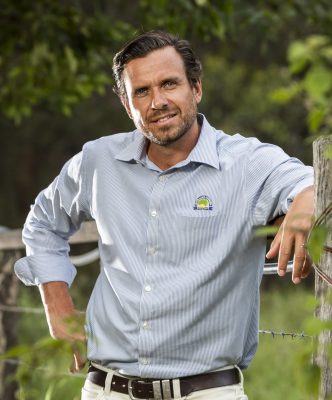
ACC grazing country in western Queensland
VERTICALLY integrated beef processing company Australian Country Choice has signed up to its first carbon project, with plans to reduce methane emissions on its western Queensland properties.
The company recently submitted its project to the Clean Energy Regulator, using the “Beef Cattle Herd Management” methodology, which awards Australian Carbon Credits Units (ACCUs) for reducing methane emissions through improved efficiency.
ACC will be aiming to lower its herd emissions by reducing the number of unproductive breeders and reducing the time period for young cattle to reach market age.
“ACC plans to reduce total emissions, including herd, through a variety of methods and projects that best-suit the individual properties and assets,” said CEO Anthony Lee.
“There is still a lot of uncertainty around the science, and how the methods will work practically on the ground over the long term.
“We have chosen this method as we are evolving our herd to suit our new customers’ needs and this method provided the most certainty.”
The herd reduction method is widely regarded as one the lowest-risk methods available – as there are no penalties for not meeting goals.
Many large pastoral companies have started similar projects, including Stanbroke, NAPCo, AACo, Consolidated Pastoral Company and Paraway. CPC, AACo and Paraway have all earnt credits through their projects.
Scale needed for herd reduction
While the herd reduction methodology is seen as a low-risk way of earning Australian Carbon Credit Units (ACCUs) and improving efficiency, it requires large cattle herds to be viable.
CarbonLink business development manager Charlie Hawkins said most projects required more than 15,000 head in one herd or an aggregation of at eight least producers with smaller herds of about 2,000 head.
“Aggregations are appealing to carbon project service providers to make up the minimum viable product,” he said.
“While the herd function and demographics will vary, you generally work on a yield of more than 0.2 ACCUs per head per year. Service providers will take between 15 to 30pc commission – depending on the company – so scale is needed.”
Mr Hawkins said backgrounding operations were preferable in herd abatement projects, with changes in management to turn-off animals in less time. He said the aim was to reduce emissions intensity or kg of CO2 equivalent per kg of beef.
“The activities undertaken in the herd reduction method aim to lower emissions intensity through improved daily weight gains,” he said.
“This is normally achieved through genetics, lowering stress and improving diet with better pasture management.”
Mr Hawkins said the herd reduction methodology provided a lot of opportunity for producers.
“It is not tied to the land and only runs for seven years with no risk of going backwards.,” he said.
“If you don’t experience improved live weight gain in the seven project years compared to the reference period or three baseline years then no ACCUs are issued and you probably are not making much return from your livestock enterprise.
“We are getting a lot of inquiry about the Beef Herd Method herd reduction and with the carbon price increasing I think it will become more viable.”
More clarity needed on land-based carbon
Mr Lee was asked about carbon after a speech he made to the Rural Press Club at this year’s Brisbane Ekka. He said while there was a lot of opportunity in carbon and the business had employed a full-time sustainability manager, more work was needed to give the industry confidence to invest.
“The concern I have is that the methods for assessment are not clear, and government has a role to play in actually clarifying how it all works. There’s still a lot of uncertainty about what it all means for a producer’s long-term future, what it means for property valuations and the like,” he said.
“I think that needs to be resolved first. But once that’s done, for the people who have land, there are huge opportunities, not only to reduce our footprint (most other industries cannot – they have to go and buy credits), while we can actually go and do it through our own means.”
Mr Lee said he was struggling to answer some fundamental questions about the long-term implications of projects.
“We are still trying to find out what happens at the end of the 25-year or 100-year permanence, what happens in the event of fires or floods or if we can’t reach our goals on a particular project,” he said.
“You speak to a valuer about how they are going to value carbon projects and many are still very confused about it.”
While Mr Lee believed there are still issues for the government to work through on its carbon farming framework. He said it had the potential to benefit the beef industry if it was developed appropriately.
“We want to be able to keep our production and reduce our footprint at the same time,” he said.
“We need an outcome that is a win for the business and a win for the environment, locking up the whole of Australia and putting it back to timber is not a practical solution. The methods are very regimented, there is not a lot of flex in it at the moment and I think that needs to change.”


Australian tax payers are being rorted by the Beef Herd Method because the practices involved should be part of standard best practice management which has its own financial and environmental co-benefits rewards inherent in maintaining a socially-responsible food production business. These outcomes should not be financially boosted by government paying for Australian Carbon Credits Units from the public purse. These same companies will be promoting the so called carbon abatement story to their customers and expecting a higher price per kg carcase weight for what should be standard best practice developed over years of agricultural research in the public and private sectors. The irony is tax payers have been funding for decades and continue to fund most of the research behind achieving livestock productivity improvement. So we have a triple win for businesses involved with the Beef Herd Method: taxpayers fund research involved with best practice, the taxpayers pay for the ACCUs generated, and the beef consumers pays a premium for the carbon abatement story.
“While the herd reduction methodology is seen as a low-risk way of earning Australian Carbon Credit Units (ACCUs) ”
Is the article saying they will earn carbon credits by essentially reducing cattle numbers.
So if I drive my car less I can earn carbon credits as well?
I have always thought these worldwide carbon credits and all associated money making schemes will end up being the biggest case of fraud the entire world will ever see.
Hi Paul, most beef herd reduction projects are not necessarily about reducing herd numbers, they are more about reducing emissions from the herd – cattle spending less days on farm is the main idea. However, I can’t see why you would not get carbon credits for reducing herd numbers over your seven year period. You can also earn carbon credits for driving a car less, but I don’t know much about it. May be a subject for another story. Editor
HGP s would be a help in this situation.